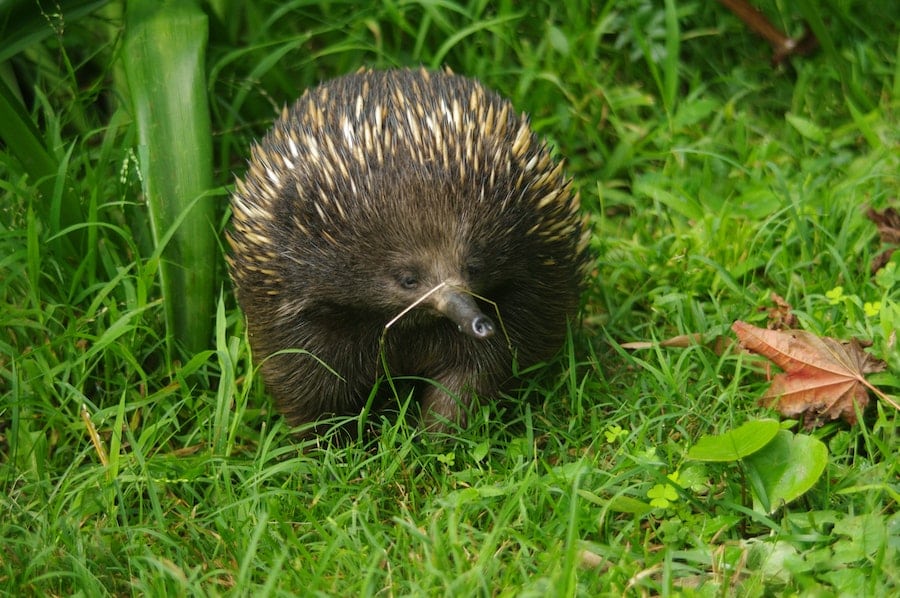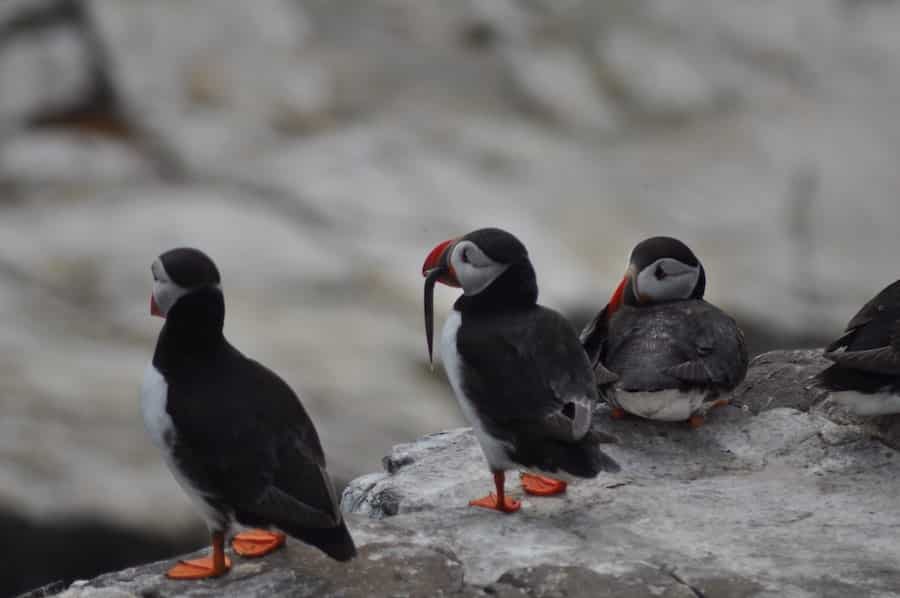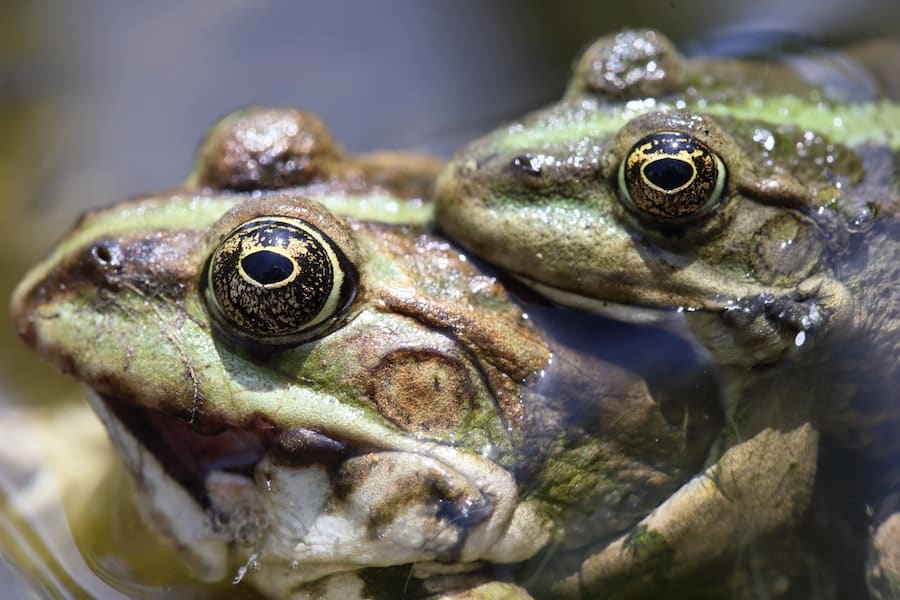1. Crows remember you
Crows recognize human faces, particularly those who pose harm to them and their habitat. They live up to fifteen years and can pass on this information to their offspring, so there’s no chance they’ll forget you anytime soon.

2. Pangolins ride their mothers tail
Newborn Pangolins tend to travel on their mother’s tail. When danger is close, the mom will ball herself up around the baby.

3. Cats used to deliver mail
For a brief period, cats delivered mail in Belgium. During the 1970s, the city of Liège “hired” 37 cats to deliver mail in waterproof bags. As expected, the cats weren’t effective mailmen. The shortest time spent on delivering a letter? 5 hours.

4. Cougars are natural gardeners
Cougars are nature’s gardeners. They eat herbivores with seeds in their stomachs and then spread them far and wide through their poop. As a result, some can plant up to 94,000 plants a year.

5. Termites mate for life
Many species of termites will mate for life. A female “queen” and male “king” will give birth to an entire colony. They might stay together for as long to 20 years, depending on the species’ lifespan. The rare cases of relationships ending can result in violence like Termites chewing off each other’s antennae.

6. Careful of what you eat!
The red-factor canary’s coat changes color depending on its diet. Feed it any natural orange and red food like beets, and its feathers will change to match it.

7. Clownfish change gender
Clownfish are one of many sea creatures that can change gender. Generally, one female will school with multiple males. When the female dies, the dominant male will change their gender to take her place.

8. Quokkas sacrifice their babies
There’s a common misconception that Quokkas will throw their offspring at predators to distract them. While not technically correct, Quokka’s evolution makes them terrible parents. They will instinctually jettison their babies from their pouches when predators are close. The babies writhing and hissing attract the predator while the mom escapes. They don’t technically throw their young, but the truth is close enough.

9. Dolphins can kill themselves
Unlike humans, dolphins have to decide when to breathe consciously. There are documented cases of dolphins in captivity killing themselves by refusing to breathe in a form of dolphin suicide.

10. Kakapo attracts predators
The endangered Kakapo bird emits a musty, sweet odor that leads predators straight to it. This is why it is endangered.

11. Mammals can lay eggs?
There are only two mammals on Earth that lay eggs, and they are both from Australia – the platypus and echidna.

12. Woodpeckers have long tongues
Woodpecker’s tongues are very long and are wrapped around the skull. This is to provide a brain cushion while they peck.

13. A Polar Bear’s liver can kill you
Polar Bear’s bodies are incredibly efficient at storing Vitamin A. If you were to eat a polar bear liver, you would die. It contains enough Vitamin A to kill you 52 times.

14. Rodents can’t puke
Rodents ranging from mice to guinea pigs, to squirrels all cannot vomit. They lack the brain circuit required for this behavior.

15. Giraffes taste pee
Male giraffes taste the pee of females to determine if they are ready to mate. This is to detect hormones that show that the female is ovulating.

16. Goldfish have a decent memory
Goldfish don’t have a 3-second memory. Though not the smartest, goldfish boast a memory span of three months – better than most people I know.

17. Platypuses don’t have nipples
Female platypuses don’t have nipples. To feed their children, they sweat milk out of their pores, and the babies lick it off their skin.

18. Tigers have striped skin
Not only is a tiger’s fur striped, but his skin as well.

19. Otters hold hands
As if they weren’t cute enough, sea otter’s hold hands while they’re sleeping so they don’t drift apart.
20. White Flamingos
Flamingos are naturally white. A diet of shrimp, brine, and algae actually turns them pink.

21. Blind as a bat
Bats aren’t actually blind – in fact, their eyesight is considered better than humans. Echolocation is just an added bonus to help them hunt at night.

22. European Lions
Lions used to inhabit Europe, but they were hunted to extinction before 100 BCE.

23. A cats meow
Cats do not meow at each other. It is solely used as a way to get the attention of humans.

24. Kangaroo’s balance
Kangaroo’s need their tails to balance – if you lift their tale off the ground, they can’t hop.

25. Slow beating heart
Whale hearts only beat nine times per minute – by comparison, human hearts beat between 60 to 100 times per minute.

26. Puffin ingenuity
Puffins will use twigs to scratch themselves.

27. Skin breathing
Frogs can breathe through their skin. This isn’t the primary way they breathe, but a result of their blood flowing near the skin’s surface, allowing it to absorb oxygen.

28. Strange friendships
Some burrowing tarantulas befriend frogs. They will protect each other’s eggs and share food.

29. Nightmare fish
The tongue-eating louse is what nightmares are made of. It will invade a fish through its gills and destroy its tongue’s blood supply, causing it to falls off. From there, it takes up residence and lets the fish find all the food.

30. Massive blue whales
The blue whale has a heart the size of a small car and as heavy as a small elephant. You can hear it beat from up to 3km away.

- Tulip Mania – The Story of One of History’s Worst Financial Bubbles - May 15, 2022
- The True Story of Rapunzel - February 22, 2022
- The Blue Fugates: A Kentucky Family Born with Blue Skin - August 17, 2021
